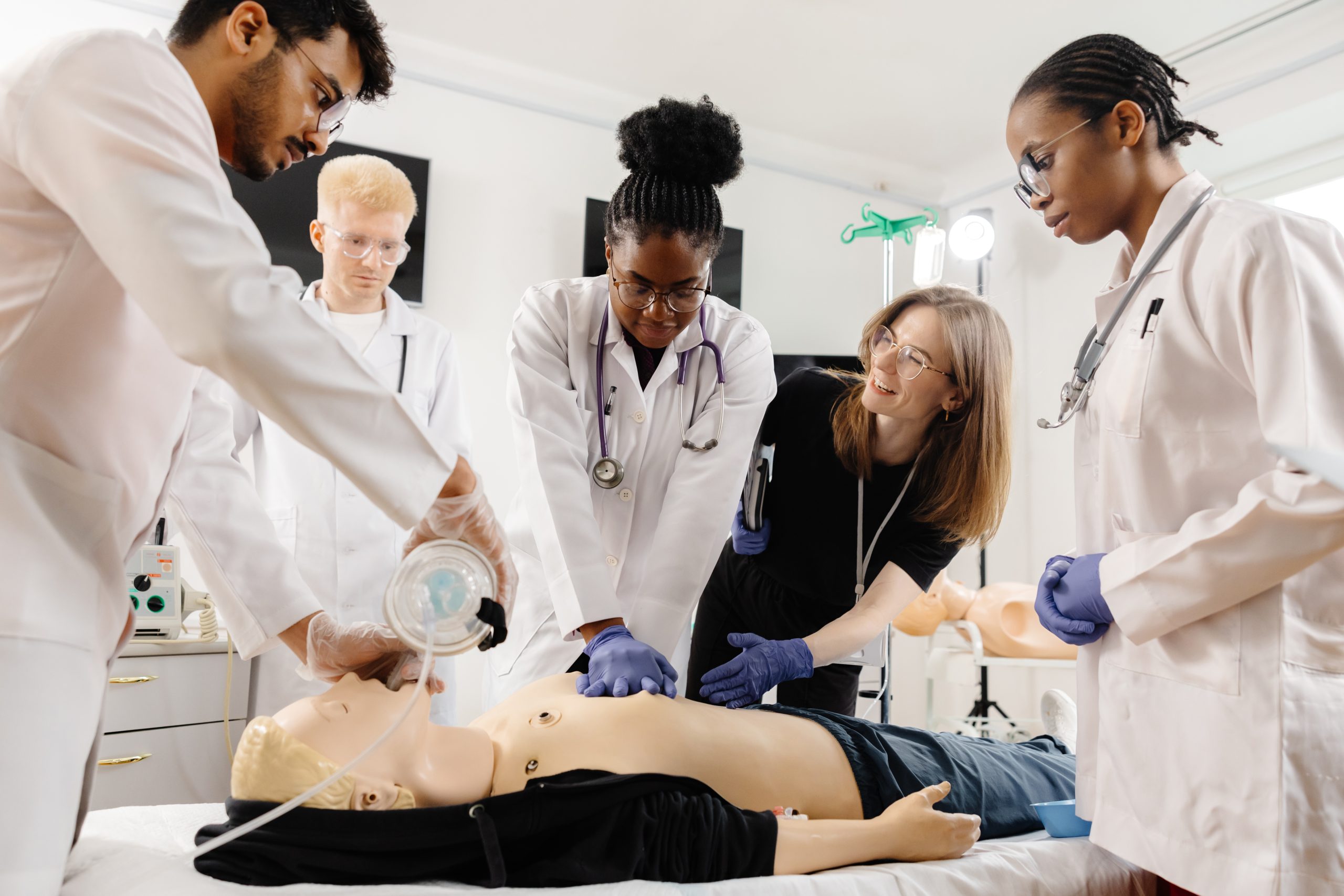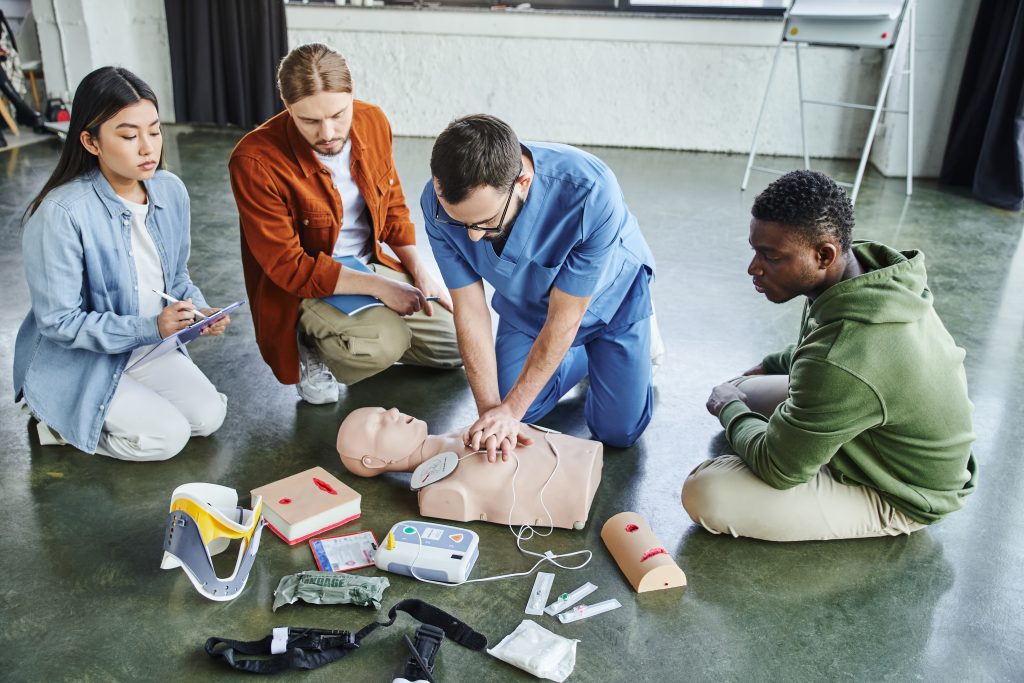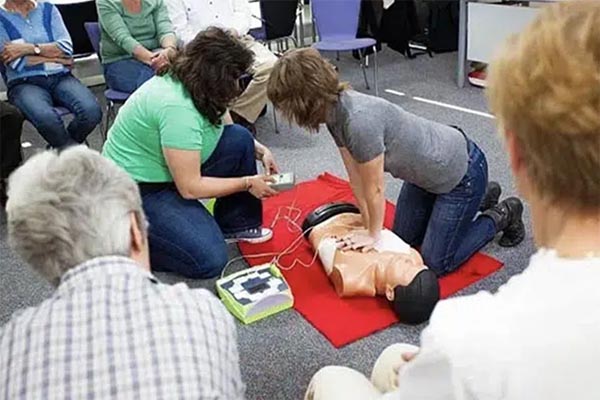
In the fast-paced, high-stakes world of healthcare, every second counts. From bustling emergency rooms to quiet dental offices, the potential for a medical crisis is always present. When a cardiac or respiratory emergency strikes, having a standardized, evidence-based plan of action is not just a good idea, it’s a matter of life and death.
This is where Basic Life Support (BLS) certification comes in. While many people are familiar with general CPR training, BLS is a distinct, more advanced credential specifically designed for healthcare professionals. It’s the universal language of emergency care that transcends specialties and ensures a coordinated, effective response. For those working in healthcare, particularly in a hub like Washington, D.C., BLS is more than just a certificate; it’s the gold standard of professional preparedness.
The Foundation of Life-Saving Skills
At its core, BLS certification provides the foundational skills needed to manage a medical emergency until advanced care arrives. It’s a comprehensive course that goes beyond simple chest compressions. The curriculum is built on the latest scientific research and covers a range of critical interventions.
A BLS-certified professional is trained to quickly and accurately assess a scene for safety. They learn to recognize the signs of cardiac arrest, stroke, or choking in adults, children, and infants. This swift and accurate recognition is the first step in a successful rescue. The BLS course focuses on high-quality CPR, which is defined by specific compression depth, rate, and recoil. This precision is vital for maximizing blood flow to the brain and other vital organs.
Furthermore, BLS training includes the proper use of an Automated External Defibrillator (AED). These devices are now a common sight in public places and healthcare settings. A BLS course provides hands-on practice, teaching professionals how to apply the pads and follow the device’s prompts to deliver a life-saving shock if needed. The ability to use an AED correctly can dramatically increase a person’s chances of survival.

Standardized Excellence: Why Consistency Matters
One of the most compelling reasons BLS is considered the gold standard is its emphasis on standardized care. The American Heart Association (AHA) and the American Red Cross (ARC) publish the guidelines for BLS, which are followed by healthcare providers nationwide. This creates a uniform approach to emergency response. When multiple professionals, like an EMT, a nurse, and a doctor, respond to the same emergency, they all speak the same procedural language. They understand the proper sequence of actions and can work together seamlessly as a team. This coordination is critical, especially in a chaotic and stressful situation.
Imagine a scenario in a busy D.C. hospital. A patient suddenly goes into cardiac arrest. A nurse, a resident physician, and a respiratory therapist all arrive at the bedside. Because each of them holds a current BLS certification, they instantly know their roles and responsibilities. One begins high-quality chest compressions, another prepares the AED, and the third manages the airway. This orchestrated response, born from a shared understanding of BLS protocols, maximizes the patient’s chance of survival.
This standardization extends beyond hospitals. BLS is essential for paramedics responding to calls on the streets of Washington, D.C., for dentists and their staff in their clinics, and for physical therapists working with patients. The consistent training ensures that no matter where an emergency occurs, the first responders are equipped with the same, most effective techniques.
BLS vs. General CPR: A Deeper Dive
While both BLS and general CPR courses teach life-saving skills, they are not the same. General CPR is typically designed for the lay rescuer, the everyday person who might witness a cardiac event at home or in public. It provides the basics of chest compressions and rescue breaths, empowering bystanders to act.
BLS, however, is a more rigorous and in-depth course. It’s tailored for those who are expected to respond to emergencies as part of their professional duties. BLS training includes more complex scenarios and skills. For example, it delves into advanced concepts like team dynamics during a multi-rescuer resuscitation. It also covers the use of bag-mask devices for ventilation, a skill not typically taught in a standard CPR class. The certification process is also more stringent, often requiring a hands-on skills test in addition to a written exam.
For healthcare professionals, this advanced training is not just a bonus; it’s a necessity. Their work environments often present complex medical situations that require a higher level of expertise. BLS provides that expertise and ensures they are prepared to handle a wide range of emergencies with confidence and competence. It’s a prerequisite for virtually every clinical role, and for good reason. It proves that a professional has been trained to the highest standard for initial emergency care.
A Professional Requirement and a Career Advantage
In Washington, D.C., like many metropolitan areas, the healthcare industry is highly competitive. Hospitals, clinics, and long-term care facilities all have strict hiring requirements. One of the most common and non-negotiable is a valid BLS certification. For students entering the healthcare field, having this credential before they even start applying for jobs can give them a significant advantage. For seasoned professionals, keeping their certification up to date is essential for maintaining their license and employment.
Beyond being a requirement, holding a BLS certification demonstrates a commitment to professional excellence. It shows employers and colleagues that you take your role and your patients’ safety seriously. It’s a tangible representation of your knowledge and ability to perform under pressure. For a potential employer in D.C., a candidate with a current BLS card is a known quantity, someone who has been vetted and trained according to a national standard. This can streamline the hiring process and give you an edge over other applicants.

The Continuing Education Component
The field of emergency medicine is constantly evolving. New research and technology lead to updates in best practices and protocols. This is another area where BLS shines. The guidelines are regularly reviewed and updated by scientific experts. As a result, BLS certification requires periodic renewal. This ensures that healthcare professionals are always current with the latest life-saving techniques.
When you renew your BLS certification, you aren’t just retaking a test. You are re-engaging with the material, refreshing your skills, and learning about any new changes to the guidelines. This continuous education model is critical for maintaining professional competence. It prevents outdated techniques from being used and ensures that patients receive the most effective care possible based on the latest scientific evidence. This commitment to continuous improvement is what solidifies BLS as the true gold standard for healthcare professionals.
Conclusion
Basic Life Support (BLS) certification is more than a simple formality for healthcare professionals. It is the bedrock of their emergency response training, providing a standardized, evidence-based framework for saving lives. From the streets of Washington, D.C., to the operating room, it ensures that every healthcare provider, regardless of their specialty, can respond effectively and work as a cohesive team when a medical crisis occurs.
The rigorous training, emphasis on high-quality techniques, and commitment to continuous learning are what set BLS apart from general CPR. It’s a professional requirement, a career advantage, and, most importantly, a testament to a healthcare worker’s dedication to their patients’ safety. For anyone in the healthcare field, particularly those starting their journey in Washington, D.C., getting and maintaining your BLS certification is not just a choice, it’s a fundamental part of your professional identity.
Ready to take the next step in your career and become BLS certified? Contact CPR Classes Near Me to find a course that fits your schedule and meets your professional needs.
FAQs about BLS Certification for Healthcare Professionals
Q: What is the difference between CPR and BLS?
A: General CPR is designed for the public and focuses on basic life-saving skills like chest compressions and rescue breaths. It’s for anyone who might witness an emergency. BLS (Basic Life Support) is specifically for healthcare professionals and includes a more in-depth curriculum. It covers additional topics such as the use of specialized airway devices, team-based resuscitation, and more complex scenarios tailored to a clinical environment. While both are critical, BLS is the higher standard required for clinical practice.
Q: Who needs BLS certification?
A: BLS certification is required for a wide range of healthcare professionals. This includes doctors, nurses, paramedics, EMTs, dentists, dental hygienists, physical therapists, occupational therapists, medical assistants, and many others who work in a clinical setting. It is often a prerequisite for employment and a requirement for maintaining professional licensure. Even students in healthcare programs are often required to be BLS certified before starting their clinical rotations.
Q: How long does a BLS certification last?
A: BLS certification is typically valid for two years. After this period, healthcare professionals must take a renewal course to keep their certification current. This is important because the scientific guidelines for resuscitation are updated regularly, and renewal courses ensure that providers are using the most current and effective techniques.
Q: Can I get my BLS certification online?
A: While some of the course material and written exams can be completed online, the hands-on skills portion of the BLS course must be performed in person with a certified instructor. This is a requirement from the certifying organizations like the American Heart Association (AHA) to ensure that participants can physically and correctly perform the life-saving skills, such as chest compressions and the use of a bag-mask device.
Q: Is BLS certification a good idea even if my job doesn’t require it?
A: Absolutely. While it’s a professional requirement for many, having BLS certification can be beneficial for anyone. The skills learned are invaluable in any emergency situation, whether at work, at home, or in a public setting. Having the confidence and ability to provide a high level of emergency care can make a life-or-death difference for a loved one, a colleague, or a stranger.

Leave a Reply